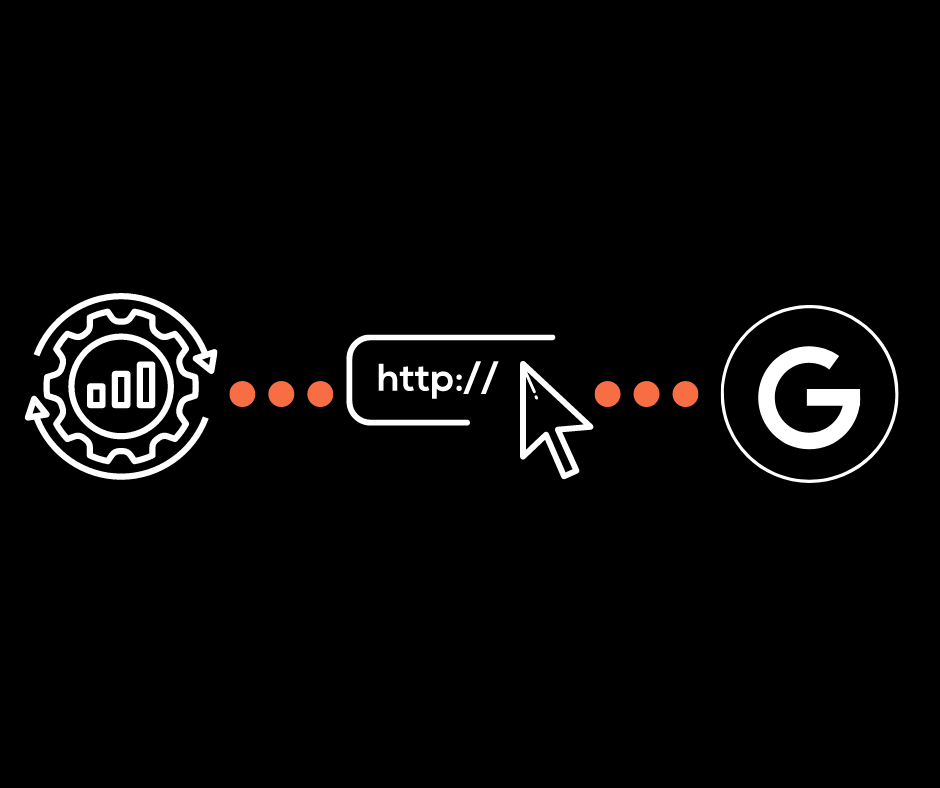Creating a user-friendly website is essential for any business or organization that wants to provide a positive and seamless experience for its visitors.
It needs to be visually appealing, easy to navigate, and designed with the needs of its visitor in mind.
Here are 5 tips for creating a user-friendly website:
- Keep the navigation simple and intuitive. The navigation menu should be easy to find and use, with clear labels for each page or section. Avoid using drop-down menus or complex hierarchical structures, as these can be confusing for the user.
- Use visual hierarchy to guide the user's eye. The visual hierarchy refers to the arrangement of elements on the page, with the most important elements being the largest and most prominent. This helps users understand the structure of the content and find what they are looking for quickly.
- Choose a clean and modern design. This helps to create a professional and trustworthy impression. Avoid using too many colors, fonts, or other visual elements, as these can be overwhelming and distracting. Also, be sure to keep your branding consistent throughout the pages.
- Optimize for mobile devices. More and more people are accessing the internet on their smartphones and tablets, so it's important to make sure your website is mobile-responsive. This means that the website should automatically adjust to the screen size and orientation of the device it is being viewed on.
- Test the user experience. Before launching your website, it's a good idea to test the user experience with a small group of users. This can help you identify any problems and make necessary adjustments before the website goes live.
By following these 5 tips, you can create a user-friendly website that is an enjoyable experience for your visitors and
establishes a digital presence for your business.
Latest Posts

By Michael Cooper
•
02 Mar, 2023
Do you want your website to show up in search engine results? Do you want to get more visitors and increase your website’s visibility? If so, then this blog post is for you. In it, we’ll cover the basics of optimizing your website for Google and provide tips on how to maximize your SEO efforts. Conduct Market Analysis Conducting market analysis is an important part of optimizing a website for Google. Market analysis helps identify the target audience, understand the competitors, monitor changes in the market, and identify key opportunities to optimize the website. Through market analysis, it is possible to gain insight into the desires and needs of the customers, enabling website optimization strategies to be tailored to provide maximum benefit. Additionally, market analysis can be used to track and analyze changes in customer behavior and preferences over time, helping to ensure that website optimization remains effective. Understand Your Target Audience Understanding your target audience is the first step to optimizing your website for Google. By analyzing demographic information and conducting market research, you can determine the characteristics of your target audience and uncover valuable insights into their needs and wants. Doing so will help you create content and campaigns that are tailored to their interests and more likely to engage them. Additionally, by monitoring changes in the market, you can stay ahead of trends that may affect your target audience’s behavior. Utilizing social insights can also help you understand consumer sentiment towards your brand and industry, providing further insight into what appeals to your target audience. Analyze Your Competitors In order to optimize your website for Google, it is essential to conduct a thorough competitive analysis to understand how your competitors are performing. By analyzing the factual data of your competitors, such as their domain strength, content quality, and keyword density, you can gain insights into their SEO strategies and identify opportunities for improvement. Additionally, you can use tools such as SWOT analysis and keyword gap analysis to compare your website’s performance against that of your competitors. With this information in hand, you can develop strategies that will help you to overtake your rivals and increase your visibility in search engine results. Monitor Changes in the Market Monitoring changes in the market is essential in order to stay ahead of the competition. By looking at industry trends, you can uncover opportunities to gain a competitive advantage. You can use data analysis tools such as Google Analytics to measure your website's performance against competitors and identify areas of improvement. Additionally, you can use other metrics such as page views, time on page, bounce rate and user engagement to gain insights into how your customers are responding to your content. This will help you determine which topics and ideas resonate with your target audience and adjust your content accordingly. Sprinkle Primary and Related Keywords When optimizing a website for search engine results, it is important to sprinkle primary and related keywords throughout the content. Keywords should be chosen based on research into the target audience and market trends. By understanding the needs of your target audience, you can determine which terms are most relevant and effective for your website. Additionally, analyzing your competitors will provide insight into what keywords are performing well for them. Sprinkling primary and related keywords throughout content not only helps to boost search rankings but also ensures that users are being presented with relevant information that meets their needs. Optimize Your Page Titles and Meta Descriptions Optimizing page titles and meta descriptions is a crucial step in any website's SEO strategy . Titles and meta descriptions should include relevant keywords, accurately describe the content of the page, and be written in a way that encourages readers to click on the link. To ensure that these elements are effective, it is important to conduct keyword research, create unique titles and meta descriptions for each page, and ensure that each title and description is accurate and contains the appropriate keywords. Additionally, titles and descriptions should be optimized for both users and search engines. This can be done by including keywords naturally in the title and description, using natural language rather than keyword stuffing, avoiding duplicate content, and adhering to Google’s guidelines for titles and meta descriptions. Sprinkle Primary and Related Keywords Throughout Your Content Sprinkling primary and related keywords throughout your content is a vital part of optimizing your website for Google. When you include these keywords in your content, it helps Google identify what your page is about and how it should be ranked in search results. Make sure to include plenty of context for each keyword so that it can be understood by readers, as well as search engine algorithms. Additionally, make sure the keywords are relevant to the topic of the page you are optimizing, as this will help boost your rankings and improve the user experience. Lastly, remember to place emphasis on the primary keyword, as this should be the focus of the page. Make Sure Your Content is Optimized for both Users and Search Engines It is important to make sure that your content is optimized for both users and search engines. To do this, start by ensuring that your content is relevant to the keywords you are targeting and provide enough context for each keyword. Additionally, use a variety of keywords throughout the content, including both primary and secondary keywords, to ensure that your content is as comprehensive as possible. Finally, sprinkle the keywords throughout the body copy, subheadings, and image alt text to ensure maximum visibility. By optimizing your content for both users and search engines, you can increase your chances of ranking higher on Google's SERP. Register Site with Google Search Console Registering your website with Google Search Console is an important step for optimizing your website for Google. This platform helps you keep track of your site’s indexing status, allowing you to monitor changes and make sure everything on your site is up to date. It also provides insights into how your content is performing on Google, so you can adjust your strategy accordingly and maximize the visibility of your website in search results. Additionally, Search Console can help you ensure that all of your content is properly indexed, so it can be easily found by potential customers. Create Simple Site Navigation Creating an easy-to-navigate website is essential in order to make it easier for both visitors and search engines to find the content they are looking for. To do this, websites should include menus with internal links that make it easy for visitors to find the page that they are looking for. Additionally, websites should also use a hierarchy of headings and prioritize URLs in their navigation bar. This will ensure that both visitors and search engines will have an easy time finding the content they need. Try to Keep WEB Page URL Short To optimize the URL of a website page, it is important to keep it short. This is because Google takes into account the length of the URL when ranking content. URLs should be between 50-60 characters long and should contain no more than three to five words. Additionally, hyphens should be used to separate words in multi-word slugs for posts and pages. It is also important to include keywords in URLs, as this helps Google understand what the page is about and how it relates to other pages on the website. Finally, static URLs should be used for optimal SEO performance. By following these tips, website owners can ensure that their URLs are optimized for better visibility on search engine results pages. Check Robot.txt for Errors Checking robot.txt for errors is an important step in optimizing a website for Google. This document is used to control which web pages search engine spiders can crawl, and if it is not set up properly, search engines may not be able to access your content. Therefore, it is important to review your robots.txt file and make sure it is properly configured before submitting your website to Google Search Console. Checking robot.txt can also help ensure that you are not blocking any important pages by accident, which could lead to search engine visibility issues. Check for Status Code Errors and Correct Them It is important to check for status code errors when optimizing a website for Google. Status codes are returned every time a browser interacts with a server, giving important information about the success or failure of an action. Common status code errors include 404 errors which can result in poor rankings, as they signify bad maintenance. To prevent this, it is important to check the HTTP status codes and use tools such as Google Search Console to identify and fix any potential problems. This will help ensure that your website is up-to-date and functioning properly, improving its overall ranking in search engine results. Check Site Indexing via Google Search Checking your site indexing via Google Search is an important step in optimizing your website for Google. By submitting your website to Google’s Search Console, you can verify which pages have been indexed on the search engine. This helps you to identify any errors or problems that may be preventing your site from being indexed. It is also important to make sure that all URLs are properly indexed and functioning correctly. Additionally, monitoring changes in the market and sprinkling primary and related keywords throughout your content can further help ensure that your website is properly indexed by Google. Conclusion In conclusion, optimizing your website for Google can help your website rank higher in search engine results. It is important to understand your target audience, analyze the market, and research keywords. Additionally, it is important to create optimized page titles, meta descriptions, and content for both users and search engines. Lastly, simple site navigation and short URLs help improve search engine visibility. Following these steps can help increase traffic to your website and improve SEO. I hope this guide has been useful in helping you optimize your website for Google’s search engine. As technology and search engine algorithms continue to evolve, there will only be more opportunities to improve your website’s ranking in the future. Stay tuned for more tips and tricks from WebWorx on how to make sure your website is consistently performing well!

By Michael Cooper
•
07 Feb, 2023
Yes, it is possible to do SEO on your own if you have a solid understanding of the fundamentals and are prepared to put in the time and effort to learn the basics. Researching your target audience and conducting keyword research are key components of SEO. Additionally, creating unique and accurate page titles, optimizing content for search engine algorithms, and building an effective back linking strategy can all help your website rank higher in search engine results pages. However, these activities can be time-consuming and require specialized knowledge , so it may not be a cost-effective solution for small or medium-sized companies.
Join our Newsletter to be the first to know!
Newsletter
Thank you for signing up!
Oops, there was an error sending your message.
Please try again later.
Please try again later.
Contact Us
9160 Forum Corporate Pkwy
Unit #350
Fort Myers, FL 33905
941-888-0118
info@webworx.agency
Online illustrations by Storyset
© 2024
All Rights Reserved | WebWorx LLC


